
Plant of the Month September 2023
GENERAL INFORMATION: I visited the Zagros Mountains and surrounding areas in Iran in 2010. Up till then, I had not grown many Muscari, just M. latifolium and M. comosum. We found many Muscari species and the closely related Bellevalia in screes and meadows. These genera have been frequently reclassified. They are now in the Asparagaceae, not Liliaceae.
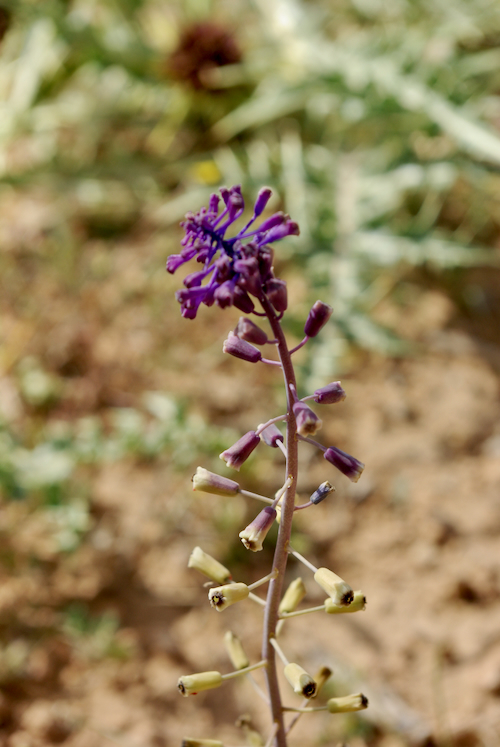
Bellevalia longipes
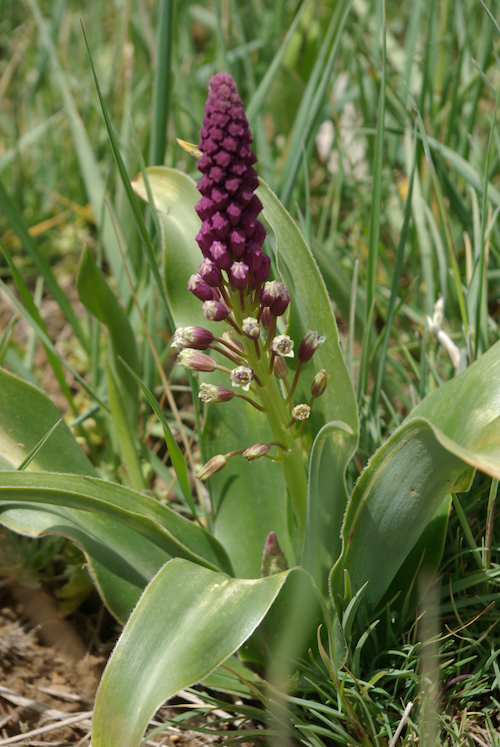
Bellevalia longistyla
Bellevalia has previously been described as Hyacinthus or Muscari. Web sites show mixed names and sometimes inaccurate information.
Bellevalia differs from Muscari as the florets are constricted at the mouth in Muscari, open in Bellevalia.
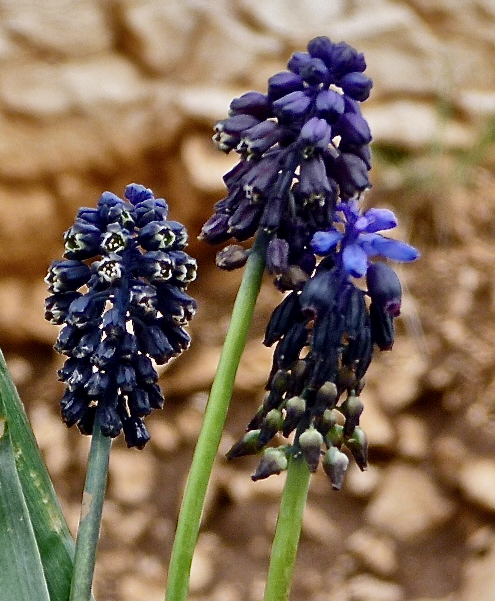
Bellevalia paradoxa (2), Muscari sp. right, showing differences in flower structure.
Synonym: Muscari paradoxum, Bellevalia pynantha and many more.
Common Name: Giant Grape Hyacinth.
Range: Native to NE Turkey, NW Iran and Armenia. There are about 50 species from Europe to the Middle East, many of botanical interest only.
Habitat: Meadows, usually damp, around 2000 m.
Dry - Bellevalia paradoxa in Zagros Mts. In water with Fritillaria reuteri. 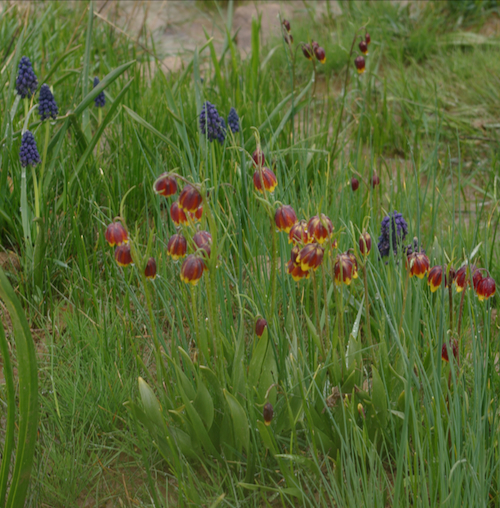
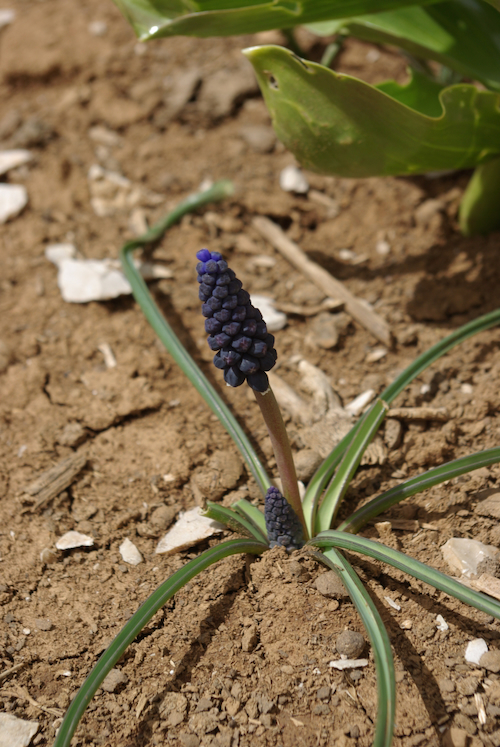
Cultivars: Listed as Bellevalia pycnantha ‘Green Pearl’, with flowers matching the foliage. Bellevalia pycnantha alba is a white form.
Life Cycle: Perennial bulbs, which are round to ovoid, 1.5–2 cm long and 1–3 cm wide. Dormant in summer.
Height: 20-30cm high, 10-20cm spread.
Bloom Time: Late April to late May, in Toronto, with flowers lasting about 3 weeks.
Flower Colour & Size: A leafless stem, up to 30 cm high, with 50-100 dark purple-blue bell-shaped florets packed on a dense raceme which is initially 2-3 cm long. The florets are about 0.5-0.6 cm long and 0.2-0.3 cm wide, sometimes with white margins. Possibly forms from Turkey differ.
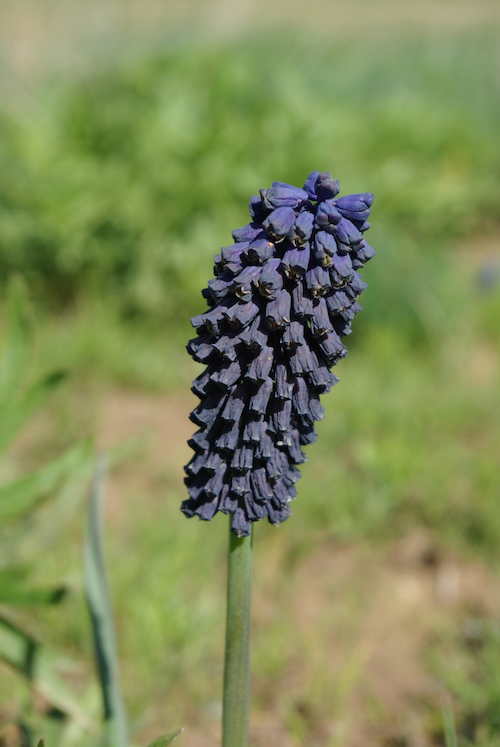
Bellevalia paradoxa - Iranian form.
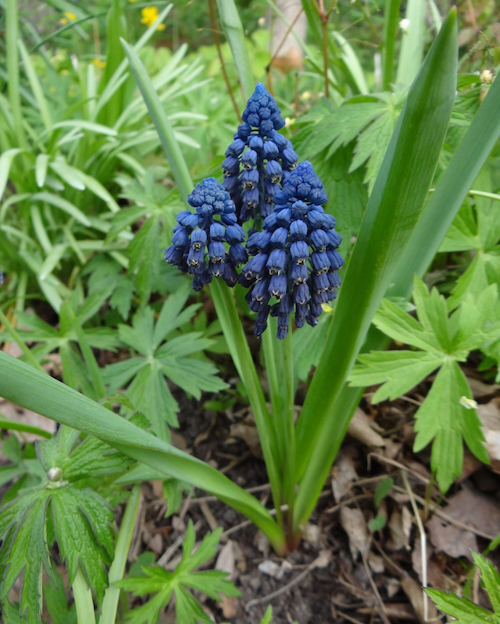
Bellevalia paradoxa in garden, showing inflorescence and leaves.
Leaves: 5-7, sword shaped green leaves, narrowed at the base, with pointed tips, to 20 cm long.
Fruit: Stem elongates after flowering, separating 3-chambered capsules. Black seeds.
CULTIVATION:
Plant: bulbs in early fall, in groups, 5-10cm deep.
Light: Sun to part shade.
Soil: Most soils, well drained, neutral to slightly acid.
Water: Average moisture (will survive brief floods), dry when dormant.
USDA Hardiness: Zones 4-10.
Pests and Diseases: usually trouble free.
Companion planting: With rock garden plants, in mixed bulb border, naturalized in lawns. Use with white or yellow plants to show up the dark colour.
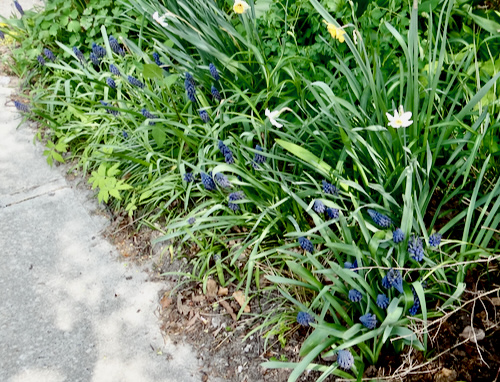
Bellevalia paradoxa in mixed border.
Propagation: Dig and divide clumps in late summer. Sow seeds @ 4°C for 3 weeks, then place at 20°C.
References:
https://onrockgarden.com/index.php/germination-guide
https://www.pacificbulbsociety.org/pbswiki/index.php/Bellevalia
https://gardenchronicle.com/how-to-grow-bellevalia
Text and images supplied by Anna Leggatt (Toronto Master Gardener)
